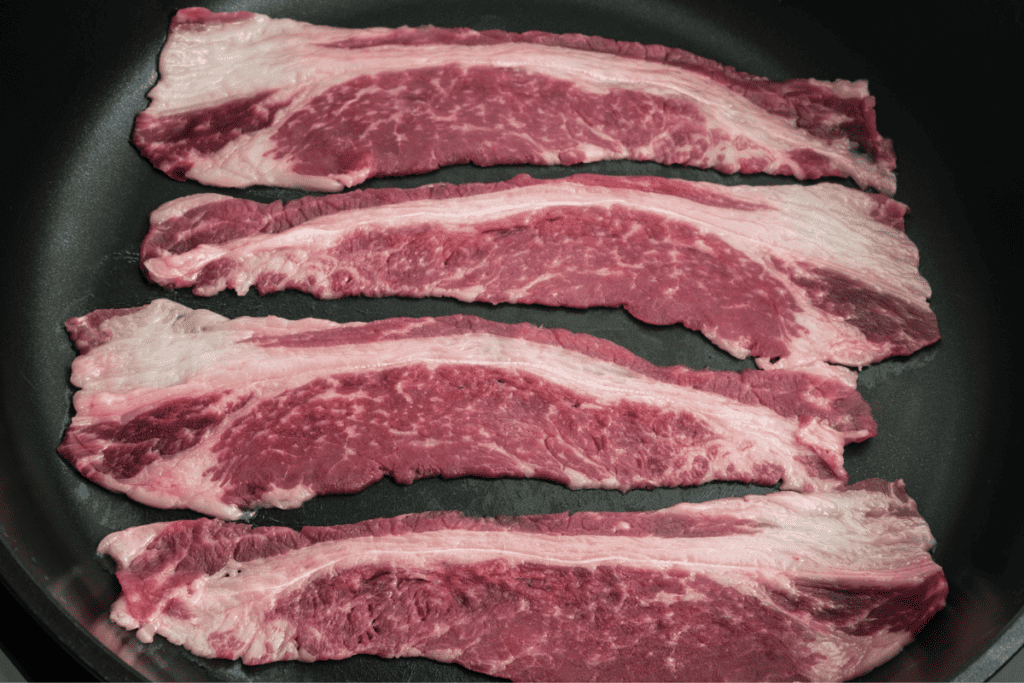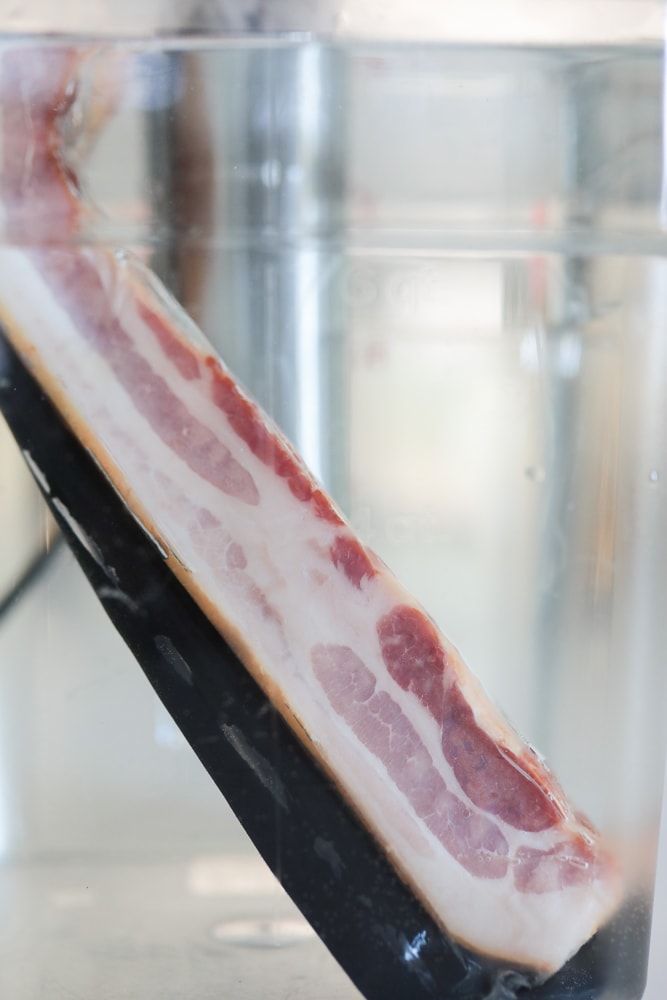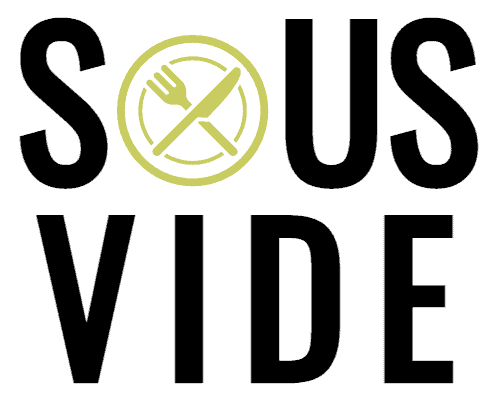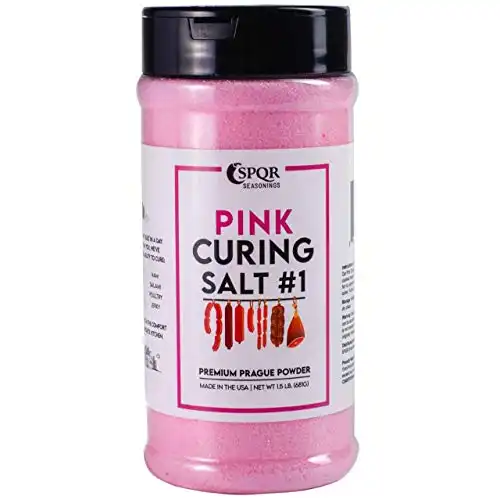Everyone has heard of pork bacon and its leaner turkey bacon alternative. But have you ever encountered beef bacon before?
It’s a beef alternative that’s high in protein and an excellent choice for those who avoid pork consumption.
Beef bacon is cured and smoked just like the standard pork variety, but it has a saltier, meatier flavor.
In this article, I’ll walk you through the ins and outs of beef bacon: what it is, how to make it at home, and how it measures up against other kinds of bacon.

Table of Contents
What Is Beef Bacon?
Beef bacon is cured, smoked, and thinly sliced beef belly. It’s leaner and higher in protein than traditional pork bacon.
Since a cow doesn’t have a fatty underbelly like a pig, the trick to delicious beef bacon is to use a highly marbled cut of beef. Beef navel, marbled short rib, brisket, or round are common cuts for curing beef bacon.
It’s tastier than turkey bacon, and serving-for-serving has less than half the calories of pork bacon.
How to Make Beef Bacon at Home
It can be challenging to find prepackaged beef bacon in the store. So, your best bet to ensure you can try a slice of this lean and meaty pork bacon alternative is to make it yourself at home! And this way, you can completely customize the spices that flavor the bacon.
It’s a bit of a process, so let’s get into how you can make beef bacon at home:
Essential Ingredients
- Beef Bacon – You’ll need a cut of beef that is fatty enough to create bacon. Try using beef navel, highly marbled short ribs (Wagyu beef is an excellent option), or beef brisket.
- Salt – I recommend fine sea salt. In a pinch, you could use table salt or kosher salt.
- Sugar – You can use whatever kind of sugar you prefer: Granulated Sugar, Demerara Sugar, Brown Sugar, Maple Sugar, etc.
- Pink Curing Salt – Curing salt is critical for seasoning, color, and food safety. It will prevent the growth of harmful bacteria during the curing process. Plus, curing salt gives the bacon the pink color we’re used to, as opposed to a grey/brown.
- Spices – Adding spice is an optional step, but this is where you can get creative! Allium powders, smoked paprika, liquid smoke, or BBQ rubs are excellent options.
Curing Formula
The amounts of salt, sugar and curing powder necessary will depend on how much meat you have. Therefore, it’s best to calculate the measurements by weight instead of volume for accurate results.
If you’re not confident in your math skills, don’t worry. Math isn’t my strong suit, so I’ll walk you through calculating how much of each ingredient you need.
Take the total weight in grams of your trimmed meat. Note, one pound equals 453.6 grams. For example, suppose you have 3lbs of meat (approx. 1360g) then you’ll need:
- Salt – Use 3% weight of the meat (total weight in grams x .03 = grams of salt)
- For 3lbs of meat (1360g), you would need 40g of salt (1360 x .03 = 40.8)
- Sugar – Use 1.5% weight of the meat (total weight in grams x .015 = grams of salt)
- For 3lbs of meat (1360g), you would need 20g of sugar (1360 x .015 = 20.4)
- Curing Salt – Use .25% weight of the meat (total weight in grams x .0025 = grams of curing salt)
- For 3lbs of meat (1360g), you would need 3g of curing salt (1360 x .0025 = 3.4)
- XL BOTTLE OF CURING SALT #1: Enough to cure hundreds of pounds of meat, in an easy to use and store container. Sprinkle directly or measure using the direct teaspoon entry.
- THE BEST CHOICE FOR WET-CURING/PRESERVING: sausages, ham, salami's, jerky, game, fish, all types of bacon and more!
Easy Instructions
1. Trim the meat & remove the bones
Start by trimming away any excess hanging bits of stray shreds and removing any bones. Thin pieces will cure unevenly, so ensure you have a solid, neat block after all the trimming is done.
2. Coat meat with salt & spices mix
Measure and combine the salt, sugar, curing salt, and spices in a bowl. Then, coat the outside of the meat with the cure mixture. Take your time and ensure the coating is evenly distributed and covers every bit of the beef.
3. Vacuum seal your beef bacon to cure
Place the beef into a vacuum seal bag along with any excess cure mixture. Then, remove all excess air.
Alternatively, you can use a Ziploc bag and remove the air with the water displacement method.
Store the beef bacon in the fridge for 5 days. Then, flip it once a day so that it cures evenly.
Cured meat should be firm throughout the entire block of beef. If you can feel any soft spots after the 5 days, put it back in the fridge for another day or so for the meat to completely cure.
Then, you can remove the bacon from the packaging and rinse any excess salt from the exterior.
The cured beef bacon is now ready to slice thinly, cook until crispy, and devour!
4. (Optional) Smoke your beef bacon
If you have the equipment available to you, smoked bacon is delicious.
Smoke the bacon in a smoker or on the grill.
Then slice the beef bacon super thin and give it a quick crisp in a pan.
Beef Bacon vs Pork Bacon
When comparing beef bacon to pork bacon serving for serving (2 slices), beef bacon is by far the healthier option.
The USDA reports that a serving of beef bacon contains 30 calories, 2g of fat, and 60mg of sodium. On the other hand, a serving of pork bacon can contain up to 90 calories, 7g of fat, and 360mg of sodium. That’s a huge difference!
Let’s be honest. Fatty, salty pork bacon isn’t exactly a “health food” and should be enjoyed occasionally, in moderation. But before you become an exclusively beef bacon convert, let’s give credit where credit is due.
Neutral-flavored fat rendered from pork bacon is more versatile than strongly flavored beef bacon fat. This is why nutrition isn’t the only reason we might choose beef bacon over pork or vice versa.
Texture, taste, and price all play a role too! So, let’s explore how beef and pork bacon differ.
Texture
Beef bacon is leaner than pork bacon—less fat results in a drier texture.
Furthermore, beef fat has a higher melting point than pork fat. But since it’s lean, you can’t just throw it into a high-heat pan and call it a day.
Beef bacon needs a longer time to render in the pan. Still, it’ll retain some chew, like a softer jerky. It’s never going to be as crispy or crunchy as pork bacon.
Beef bacon will be thicker and heavier because the absence of fat makes room for more protein and muscle.
Taste
Beef bacon has a stronger, bolder, meatier flavor than pork bacon.
It’s usually enjoyed as-is like a succulent jerky treat, cut into pieces to top a salad, or placed atop a juicy burger for a meat-lovers extravaganza!
Pork bacon has a mild sweetness tempered by the fatty, salty, smoky flavor.
It has many uses, from sandwiches to pasta to more adventurous applications like sprinkled on donuts or covered in chocolate.
And in case we need to say it since it’s become a topic of discussion, no you can’t eat raw bacon, whether pork or beef.
Price
Generally, beef is more expensive than pork, and their respective bacons are no exception.
According to Statista’s statistics, in 2022, pork bacon retailed for about $6.96 per pound on average. Beef bacon, on the other hand, the average price is approximately $8.99 per pound.
What Happens When You Sous Vide Bacon?
When you sous vide bacon, it becomes buttery soft and even more tender than usual. It’ll only require a quick one-sided sizzle and sear in a skillet. The results are a moist and crisp texture that melts in your mouth. Say goodbye to those unsavory rubbery spots.

You can sous vide beef bacon, too! The sous vide cooking method is excellent for creating tender results from lean or tough meat.
When you sous vide beef bacon, you’ll achieve a softer texture. Then, when you add it to the skillet, it’ll crisp easier since the fat has had more than enough time to render.
If pan-fried beef bacon is jerky-like, then sous vide beef bacon with a quick sear is much closer to the crisp pork bacon consistency.
New to Sous Vide?
If you’ve never dipped your toe into the sous vide world and are searching for the best way to cook beef bacon, now is your time to try it!
All you’ll need is a few key pieces of equipment and a little planning, and you’ll be well on your way to a delicious lean, high-protein pork bacon alternative.
The basic premise of sous vide cooking is built around water being an excellent conductor of heat. Therefore, submerging vacuum-sealed meat in a container of temperature-controlled water is a foolproof way to achieve even results every time.
A sous vide cooker maintains a low water temperature to cook meat to a juicy tenderness low-and-slow over multiple hours. It’s a bit of a wait, but the results are worth it—especially when trying to achieve tender and crispy beef bacon.
Beef Bacon Not Appetizing? Try Bacon-Wrapped Beef Tenderloin
You can’t go wrong with beef tenderloin if you want protein-packed lean meat.
Usually, a tougher cut of meat, if you sous vide the tenderloin to a juicy medium-rare, it’ll be tender and super tasty. Then, when you combine it with the fatty, salty, irresistible flavor of bacon, you’ve got a match made in heaven.
Simply follow this recipe to sous vide beef tenderloin. Once the meat is cooked and you remove it from the vacuum bag, season it and then wrap it in slices of bacon.
Sear it in a pan, seam side down, to secure the bacon in place. Then, brown the bacon on all four sides, about 4-5 minutes per side.
All that’s left to do is allow the meat to rest for 5 minutes before slicing it against the grain.
You could whip up your favorite sauce and serve it alongside some sous vide vegetables.
My mouth is watering just thinking about it!
Why Isn’t Beef Bacon Popular?
Beef bacon is leaner than pork bacon, so it doesn’t have as much rendered fat to be used in other culinary applications. Plus, beef fat has a strong, ultra-salty, and distinct flavor that’s mouth-watering in small amounts. Still, it can easily overpower the flavor of a dish.
The fat from pork has a neutral flavor. It’s not only delicious when attached to the bacon itself, but the rendered fat is also used for cooking and flavoring other foods.
Think pan-frying pork chops in bacon fat or using pancetta in a carbonara. Pork bacon isn’t used only for eating in slices alongside a couple of fried eggs. It’s pork bacon’s versatility and commodification that keep it popular.
Beef Bacon Recap
Similarly to pork bacon from pig belly, beef bacon comes from beef belly. It’s an excellent lean and high-protein alternative to pork bacon. However, it does have a salty, meatier flavor and chewier, jerky-like texture than the sweet, smoky, and crispy pork bacon.
Some stores carry pre-packaged beef bacon, or you can make it at home. Making beef bacon at home lets you control the cured meat’s spices and flavorings.
And if you want less of that jerky texture and something closer to the tender, crispy pork bacon, you must try sous vide beef bacon!
Read to learn the answer to: how long does bacon last in the fridge?
Beef Bacon FAQs
Similar to how pork belly is used for regular bacon, beef belly is used to make beef bacon. However, you can use beef brisket or round to create leaner beef bacon.
Pork bacon is the tastiest and turkey bacon is the least tasty, leaving beef bacon in between.
Pork bacon holds up the best to curing, and it’s very flavorful because of the high-fat content, but it’s the fattiness that makes it the least healthy option.
Turkey bacon is the leanest and healthiest option. But it doesn’t crisp as much as other forms of bacon and has a chewy, mild flavor.
Beef bacon is the middle ground that’s less fatty and healthier than pork and saltier and tastier than turkey. Plus, it’s the option with the highest protein, so it’ll keep you full for longer.
Beef bacon has a distinct, strong flavor that’s delicious in small amounts but isn’t something you’d want to incorporate into every meal. It’s not as common as pork bacon because it’s less versatile.


